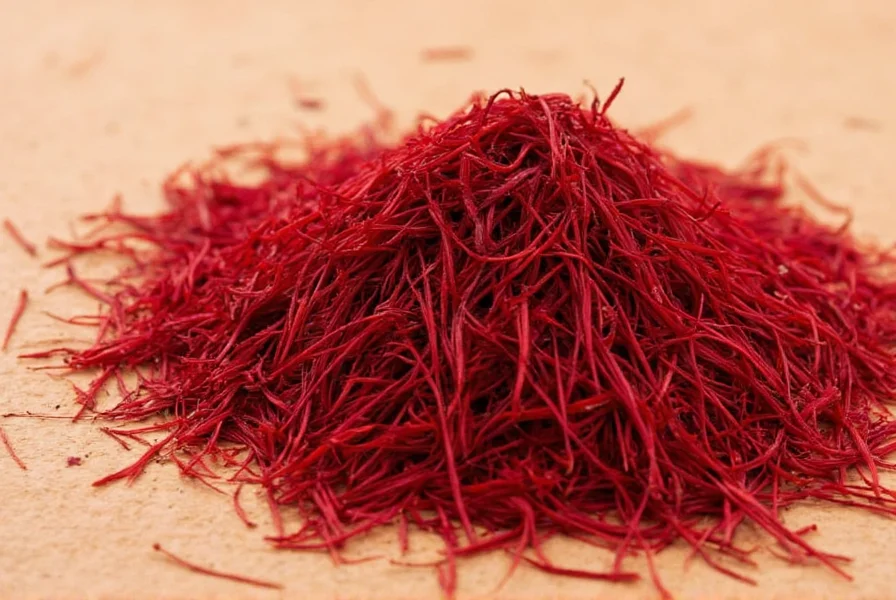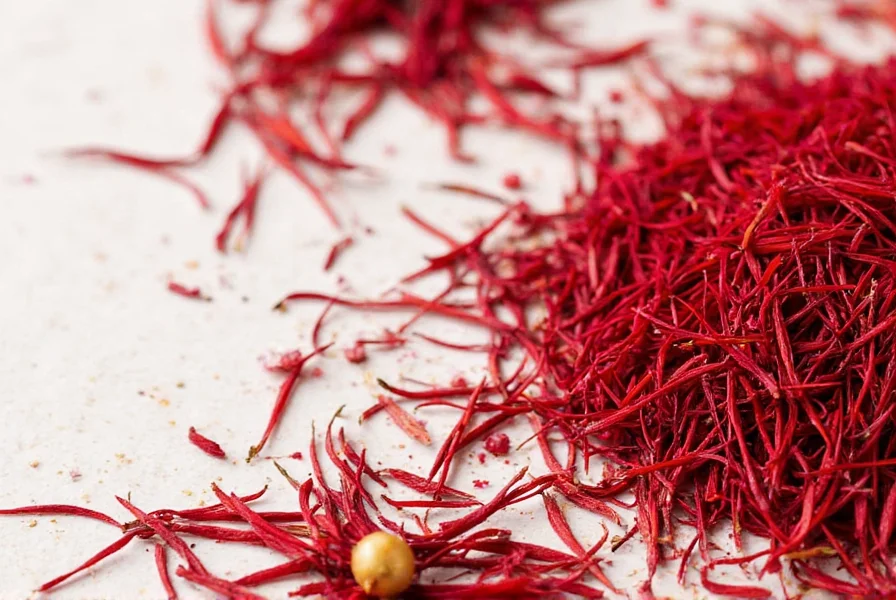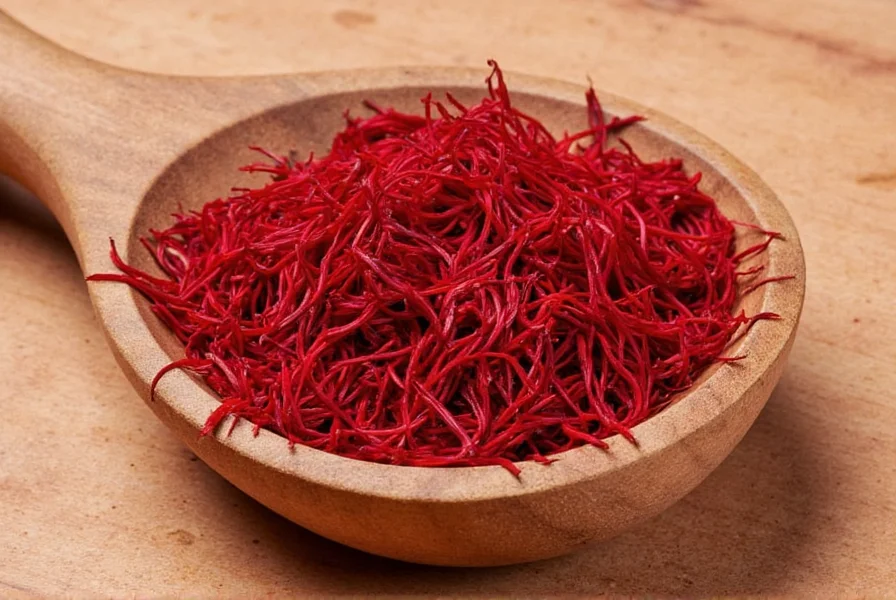Saffron's legendary status as the world's most costly spice isn't hyperbole—it's grounded in agricultural reality. When you purchase saffron, you're paying for an extraordinary convergence of biological rarity and human labor. Each Crocus sativus flower yields only three delicate red stigmas, which must be hand-picked at dawn before the flowers wilt. This meticulous process requires approximately 75,000 to 250,000 flowers to produce a single pound of dried saffron threads.
Current Saffron Market Pricing (2025)
Understanding saffron pricing requires examining multiple dimensions. The spice is graded according to ISO 3632 standards, with Category I representing the highest quality. Here's a detailed breakdown of current market rates:
| Quality Grade | Price Per Gram | Price Per Ounce | Price Per Pound | Color Intensity (ISO) |
|---|---|---|---|---|
| ISO 3632 Category I (Premium) | $10-$30 | $320-$950 | $5,000-$10,000+ | 190-250 |
| ISO 3632 Category II (Good) | $7-$15 | $225-$480 | $3,500-$5,000 | 150-190 |
| ISO 3632 Category III (Standard) | $5-$10 | $160-$320 | $2,500-$3,500 | 80-150 |
| Commercial Grade (Mixed) | $3-$7 | $100-$225 | $1,500-$2,500 | 50-80 |
Why Saffron Commands Such Extraordinary Prices
The astronomical cost of saffron stems from several interconnected factors that make its production uniquely challenging:
Labor-Intensive Harvesting Process
Unlike mechanized agriculture, saffron harvesting remains stubbornly manual. Each crocus flower blooms for just 24 hours during a narrow autumn window. Farmers must harvest flowers at dawn, then immediately extract the three stigmas by hand before they dry. This process requires approximately 40 hours of labor to produce a single ounce of dried saffron. No other spice demands such intensive human intervention per unit weight.

Geographical Limitations
Saffron thrives only in specific climates with hot, dry summers and cold winters. Iran produces 90% of the world's saffron, with smaller quantities coming from Spain, India, and Greece. These geographical constraints limit global supply while demand continues growing for culinary, medicinal, and cosmetic applications.
Post-Harvest Processing Requirements
After harvesting, saffron stigmas require careful drying to preserve their volatile compounds. Improper drying destroys the spice's characteristic aroma and color. Traditional methods involve spreading stigmas on silk screens over charcoal fires—a process requiring skilled technicians to maintain precise temperature control.
Factors That Influence Saffron Pricing
When evaluating how expensive saffron spice really is, consider these critical variables:
Purity and Adulteration Risks
Unfortunately, saffron's high value makes it vulnerable to adulteration. Unscrupulous sellers may mix saffron with safflower, marigold petals, or even dyed corn silk. Pure saffron should contain only the red stigmas—any yellow styles attached significantly reduce potency. Reputable suppliers provide ISO 3632 certification verifying crocin (color), picrocrocin (taste), and safranal (aroma) levels.
Organic vs. Conventional Production
Organic saffron commands a 20-30% premium due to lower yields and certification costs. While conventional saffron may use minimal pesticides (the crocus plant has few natural pests), organic certification appeals to health-conscious consumers despite similar flavor profiles.
Whole Threads vs. Powdered Saffron
Whole saffron threads maintain freshness significantly longer than powdered forms. Powdered saffron often sells at a discount (15-25% less per weight) but carries higher adulteration risks. For serious culinary applications, whole threads represent better value despite the higher upfront cost.
Saffron Price Comparison With Other Premium Spices
To contextualize saffron's expense, consider how it compares to other high-end spices:
| Spice | Price Per Gram | Flowers Required Per Pound | Harvest Method |
|---|---|---|---|
| Saffron | $5-$30 | 75,000-250,000 | Hand-picked |
| Vanilla | $0.50-$2.00 | N/A | Hand-pollinated |
| Cardamom | $0.20-$0.50 | N/A | Hand-harvested |
| True Cinnamon (Ceylon) | $0.15-$0.40 | N/A | Hand-processed |
This comparison reveals why saffron pricing dwarfs even other premium spices. While vanilla requires hand-pollination of each orchid flower, saffron demands harvesting three microscopic stigmas from hundreds of thousands of flowers for a single pound.
Is Premium Saffron Worth the Investment?
Despite its daunting price tag, saffron delivers exceptional value when used properly. A single gram (about 30 threads) can flavor 3-4 pounds of rice—meaning each serving costs just pennies. The spice's unique chemical composition provides complex flavor notes impossible to replicate with substitutes. When purchasing saffron, consider these value-maximizing strategies:
- Buy in small quantities: Saffron loses potency within 6 months of opening, so purchase only what you'll use in 3-4 months
- Store properly: Keep in an airtight container away from light and moisture
- Use the bloom method: Steep threads in warm liquid before adding to dishes for maximum flavor extraction
- Verify authenticity: Reputable suppliers should provide ISO certification and origin documentation

How to Identify Quality Saffron Without Breaking the Bank
You don't need to purchase the most expensive saffron to get excellent quality. Consider these practical guidelines when evaluating saffron pricing:
Look for vibrant crimson threads with minimal yellow styles attached—these indicate careful harvesting. When soaked in warm water, genuine saffron releases a rich golden hue within minutes while maintaining thread integrity. Avoid products that immediately turn water blood-red (a sign of artificial coloring) or disintegrate completely (indicating poor quality).
For most home cooking applications, ISO Category II saffron provides excellent value at $7-$15 per gram. Reserve Category I for special occasions or professional culinary applications where maximum color and aroma are critical.
Understanding Regional Price Variations
Saffron pricing varies significantly by region due to import costs, taxes, and distribution channels. Iranian saffron typically offers the best value ($5-$15/gram) when purchased directly from reputable importers. Spanish saffron (often labeled 'La Mancha') commands a 20-40% premium due to branding, while Kashmiri saffron sells at similar premiums for its distinctive flavor profile.
Online specialty retailers generally offer better prices than brick-and-mortar stores, though shipping costs and import duties can affect final pricing. When comparing how expensive saffron spice really is across vendors, always verify the weight measurements—some sellers use Troy ounces (heavier than standard ounces) to make prices appear lower.
Frequently Asked Questions About Saffron Pricing
Why is saffron more expensive than gold by weight?
Saffron isn't actually more expensive than gold by weight—this is a common misconception. While premium saffron costs $5,000-$10,000 per pound, gold trades around $20,000 per pound. The confusion stems from comparing saffron's price per ounce ($300-$950) to gold's price per troy ounce ($2,300), creating a false impression of saffron's relative value.
How much saffron should I expect to pay for genuine product?
For authentic saffron, expect to pay at least $5 per gram ($160 per ounce). Prices below this threshold typically indicate adulterated product. Premium ISO Category I saffron should cost $10-$30 per gram. Be wary of 'bargain' saffron priced below $3 per gram, as these are almost certainly counterfeit or severely diluted.
Does expensive saffron actually taste better than cheaper alternatives?
Yes, higher-priced saffron generally delivers superior flavor, aroma, and coloring power. Premium saffron contains higher concentrations of crocin (color), picrocrocin (bitterness), and safranal (aroma compounds). In blind taste tests, professional chefs consistently identify premium saffron by its more complex flavor profile and longer-lasting aroma. The difference becomes particularly noticeable in delicate dishes like paella or risotto where saffron is a featured ingredient.
How can I make expensive saffron last longer in my kitchen?
To maximize your investment in premium saffron, store it in an airtight container away from light and moisture. Divide larger quantities into small portions to minimize air exposure. Use the 'bloom method'—crush threads and steep in warm liquid for 15-20 minutes before adding to dishes—to extract maximum flavor from fewer threads. Properly stored saffron maintains potency for 12-18 months, though flavor gradually diminishes after 6 months.
Is supermarket saffron worth buying or should I seek specialty suppliers?
Most supermarket saffron falls into the lower quality tiers (ISO Category III or commercial grade) and may be adulterated. Specialty suppliers typically offer better quality control, traceability, and freshness. However, some high-end grocery chains now carry certified saffron from reputable producers. When purchasing from supermarkets, look for ISO 3632 certification, origin labeling, and opaque packaging that protects from light. For regular saffron users, specialty online retailers generally provide better value and quality assurance.











 浙公网安备
33010002000092号
浙公网安备
33010002000092号 浙B2-20120091-4
浙B2-20120091-4